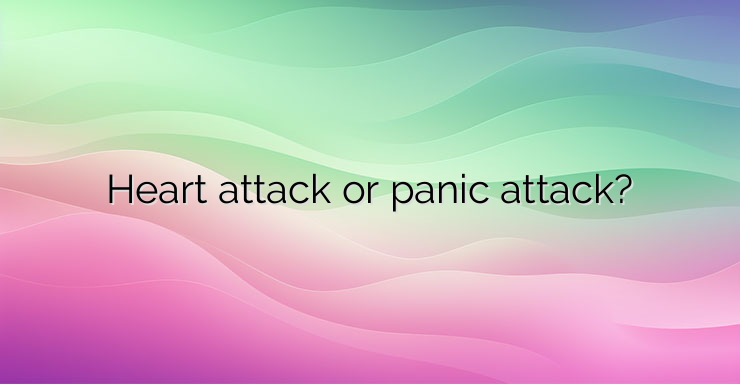Sensations such as rapid pulse, chest tightness or shortness of breath can be symptoms of a heart attack, but also of a panic attack. Despite some similar symptoms, the two conditions represent two very different disease entities that require different treatments. In a heart attack, complaints are the result of blocking the normal flow of blood to the heart. Panic attacks, on the other hand, occur as a result of the release of the hormones cortisol and adrenaline, also known as stress hormones, which are released when there is a sense of danger. In general, the risk of heart attack is the same in both sexes, but women are affected later in life, resulting in a worse prognosis. Panic attacks and disorders, on the other hand, are much more common among females than males. Furthermore, according to research, the gender gap increases with age. The prevalence rate of panic disorder in women aged 15 to 24 is 2.5% compared to 1.3% in men of the same age. For older women and men, overall rates are falling, but the gender gap is widening. Among women aged 35- to 44-years-old, the rate of panic disorder was 2.1%, compared to 0.6% among men of the same age. In addition to higher prevalence rates, women tend to be affected by more severe forms of panic disorder. How do we distinguish between the two conditions? One of the main differences between the two is that a heart attack often develops during physical exertion – increased stress on the heart, while a panic attack can occur at rest. Another difference is the duration of complaints. Panic attacks gradually subside and go away on their own within about 20 minutes, while heart attack symptoms persist and may worsen over time. Characteristic of heart attack complaints: Pressing pain and heaviness in the chest; Sudden onset of complaints during or after physical activity; Pain persistent in the arm, jaw, or shoulder blades Symptoms worsen over time; Lack of air; Dizziness; Sweating; Nausea and vomiting. Characteristic of panic attack complaints: Accelerated or accelerated heart rate; Complaints occur suddenly or during times of extreme stress or anxiety; Pain that eases over time; Symptoms resolve within 20 to 30 minutes; Lack of air; Sweating; Numbness of hands. In cases of heart attack, immediate medical attention is of utmost importance. In women, heart attack symptoms may be milder and include unusual fatigue and chest discomfort rather than severe pain. It is important not to underestimate the symptoms, as the condition can worsen very quickly. Treatment for panic attacks depends on their severity. In milder conditions, various psychotherapies, relaxation techniques such as meditation, acupuncture, yoga or others may be recommended to help reduce stress. References: https://www.bidmc.org/about-bidmc/wellness-insights/heart-health/2020/01/panic-attack-vs-heart-attack https://www.psychiatrictimes.com/view/gender-differences-panic-disorder


Leave a Reply